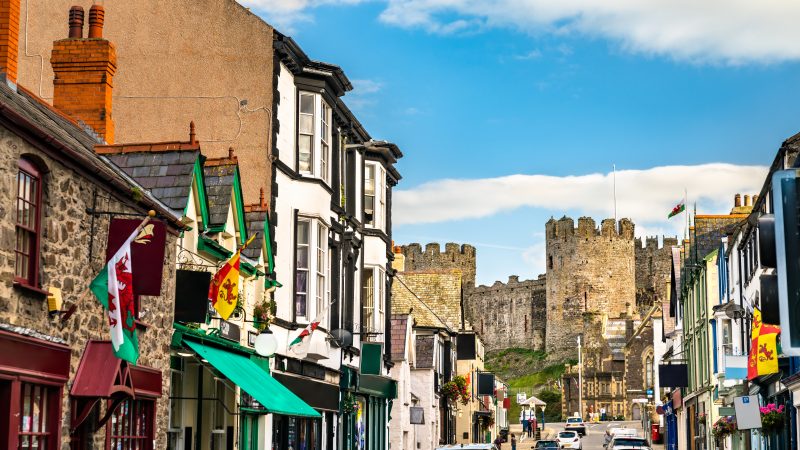
The headlines are straightforward: Labour gained 68 seats, the Independents gained six seats, the Lib Dems gained ten seats, the Greens gained eight, the Conservatives lost 86 and Plaid Cymru lost six. In terms of council control, Labour gained Bridgend and Blaenau Gwent but lost Neath Port Talbot. Plaid Cymru gained Ceredigion, Ynys Mon and Carmarthenshire. The Conservatives lost Monmouthshire.
These are the headline results, but they obscure the local changes that have taken place. This was not a referendum on the Conservative government at Westminster or on the Welsh government in Cardiff. Three things effect voters in local elections: their view of the parties, their view of the council and their view of the candidates. The smaller the ward, the more important the candidate is because a higher percentage of the electorate will know them.
It was a good election for the Labour Party in winning not only 68 additional seats but overall control of eight councils. Labour gained 12 seats in Monmouthshire, 11 seats in the Vale of Glamorgan, 16 seats in Cardiff, nine seats in Blaenau Gwent, five seats in Conwy, eight seats in Denbighshire and 11 seats in Rhondda Cynon Taff.
It was a good election for Plaid Cymru in winning the three west Wales councils that the party previously ran as a minority administration, as well as consolidating control of Gwynedd. The party also gained five seats on the Isle of Anglesey and four seats in Wrexham.
It was a good election for the Independents, winning seats in Flintshire, gaining seven seats in Neath Port Talbot, taking 15 seats in Merthyr and holding the balance of power on a number of councils.
It was a good night for the Green Party, gaining eight seats across Wales. It was also a good night for the Lib Dems, who won ten seats in Powys, becoming the largest group on the council, and gained four seats in Swansea.
It was a bad election for Labour in Neath Port Talbot where they lost ten seats and control of the council – performing badly in Neath, Neath valleys and the Swansea valley. The party also lost four seats in Caerphilly, failed to win Merthyr and lost three seats in Swansea.
It was a bad election for Plaid Cymru, losing nine seats in Rhondda Cynon Taff, four seats in Pembrokeshire and achieving no representation on several councils.
It was a bad election for the Independents, who ceased to be the largest party in Powys and lost seats in Carmarthenshire, Isle of Anglesey, Gwynedd and Ceredigion.
It was a bad election for the Lib Dems who now have no representation on a number of councils, including Bridgend, of which they had minority control until 2012.
It was a bad election for the Conservatives, especially where they were directly opposed by Labour in Monmouthshire, and in the Vale of Glamorgan where they performed very poorly.
What were realistic expectations for the parties prior to the election?
Labour to hold the seven councils they had majority control of and to win Bridgend, Blaenau Gwent and Merthyr. In reality, Labour lost control of Neath Port Talbot and failed to gain Merthyr.
Plaid Cymru to hold Gwynedd, win the Isle of Anglesey, Ceredigion and Carmarthenshire and make gains in the south Wales valleys. Whilst they took the four west Wales councils, they lost seats in the south Wales valleys.
The Lib Dems to become the largest party in Powys and to reverse their losses along the south Wales coast. Whilst Powys was a success, they failed to make significant gains across the south Wales coast.
For the Independents to hold Pembrokeshire, Merthyr, Blaenau Gwent and Powys, make gains across Wales and reverse their decline in west Wales. Whilst they held Pembrokeshire and “drew Merthyr”, they lost Blaenau Gwent and ceased to be the largest party in Powys, with their decline in west Wales continuing.
For the Conservatives to hold Monmouthshire and become the largest party in Denbighshire and the Vale of Glamorgan. The party failed on all counts, with Labour now the largest party on those three councils.
Local issues matter. An unpopular Labour council in Neath Port Talbot and an unpopular Independent council in Blaenau Gwent both resulted in substantial losses for the previous ruling party. Local candidates matter, including where you live and the local popularity of sitting councillors. This can be seen by results in places as diverse as Dinas Powys, Clydach in Swansea and the Amman valley.
In summary, a good result for Labour but not a 1995-type result, as the party won 200 fewer seats. The Conservatives had a very poor election but again nothing like 1995, as they won 71 more seats than they did in that year. The overall results for the Lib Dems and Independents were similar to 1995, whilst Plaid Cymru gained 89 more seats. We must always remember that local elections are primarily about local candidates and who controls the local council. It is not a referendum on governments.




More from LabourList
EXCLUSIVE: A Christmas message from Hollie Ridley
‘Carol of the Bells: Christmas, Ukraine’s resistance and the fight for freedom’
LabourList Christmas quiz 2025 round 3: 12 Days of LabourList Christmas